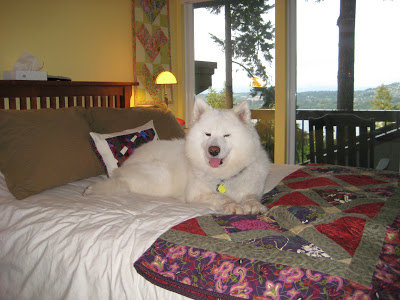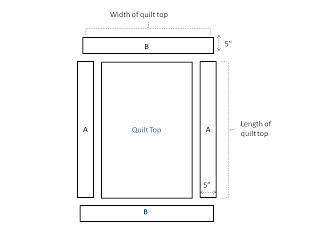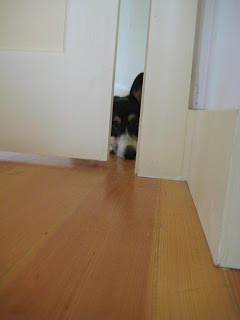 |
 |
I made this organizer as a wedding gift for a friend of mine. It has three deep pockets and a smaller pocket at the top. The smaller pocket has three compartments within it, as shown in the 2nd picture above. This organizer is great to hang by your door for organizing mail, or in your office or crafts room for organizing miscellaneous things you don’t want misplaced. It’s fairly simple to make! Below is the tutorial.
Materials:
- 1.5 yards of Home Decor fabric (home decorator fabric is thicker in weight, and measures 58”x36”/yard)
- Double stick fusible tape
- Extra-Large Eyelet kit. (You will need 2 eyelets)
Step 1 – Cut fabric for the front and back panel
Cut 2 34”x17” panels. One panel will be the front of your organizer, and the other will be the back.
Step 2 – Cut fabric for the 4 pockets
For the three deep pockets, cut 3 18”x17”rectangles.
For the small pocket, cut 1 8”x17” rectangle.
Step 3 – Fold pockets in half, press, stitch a seam.
Do the following two steps for all 4 pockets:
- Fold each pocket in half width-wise so the 17” side is the length. Press with an iron.
- On the folded side, stitch a ¼” seam along the fold.
Now you should have 4 pockets, 3 measuring 9”x17” and 1 measuring 4”x17”. All pockets should have a ¼” seam along the folded length.
Step 4 – Measure and mark where the pockets will be sewn
Take the front 34”x17” panel you cut from step 1. Starting from the bottom of the panel and going up, make a mark at 6”, 12” and 25”. Using a ruler and marker, draw a straight line across the width of each measured mark.
Step 5 – Attach the pockets
At the 6” line on the front panel, take a 9”x17” pocket and align the un-stitched side along the marked line. The side of the pocket with the stitched seam should be facing the bottom of the panel. Once you have the un-stitched side of the pocket aligned with the marked line, pin in place and sew a ¼” seam. Do the same for the 12” marked line. At the 25” marked line, do the same but using the 4”x17” pocket.
Flip all 3 pockets over so the seams (stitched from step 3) are facing the top of the panel, as shown below.
As shown below, attach the bottom pocket by aligning the non-stitched side with the bottom of the panel and sew in place using a ~1/8” seam. Unlike the previous step, the side of the pocket with the stitched seam (stitched from step 3) should be facing the top of the panel.
Step 6 – sew the compartments on the 4”x17” pocket
Measure 5” from the left and right side of the pocket, then sew a line to create 3 compartments. When sewing the line, you can use tape to help guide a straight line. Be sure to start and end your stitch with a backstitch.
Step 7 – Press and pin
Using an iron, press all the pockets upward. Then pin all pockets in place as shown below.
Step 8 – Pin in place the backing fabric
As shown in the first picture below, with right sides facing together, lay the back panel on top of the front panel. As shown in the second picture below, pin along the edges to keep the back panel in place. Leave a 7” opening, as designated by the blue tape.
 |
 |
Step 9 – Sew a ¼” seam along the perimeter of the panel, then turn inside-out through the opening
As shown in the first picture below, sew a ¼” seam along the perimeter of the panel, making sure to leave a 7” opening; trim the extra fabric from the corners. As shown in the second picture below, turn inside-out through the 7” opening, and then press flat with an iron.
 |
 |
Step 10 – Close the opening, and stitch a final ¼” seam along the perimeter. Attach eyelets.
As shown in the first picture below, press the 7” opening closed using double-sided fusible tape. As shown in the second picture below, sew a final ¼” seam along the perimeter of the panel.
 |
 |
The final step is to attach the eyelets; simply follow the instructions on the back of the package. From the top left and right corner, I placed the eyelets 2” over and 1” down.
That’s all there is to it! 🙂














































Comments: 6 | Leave a comment